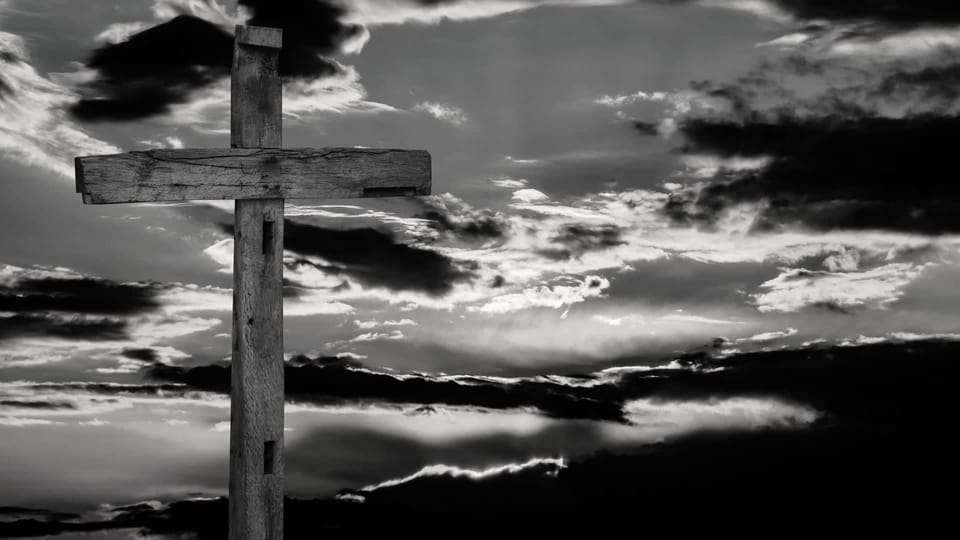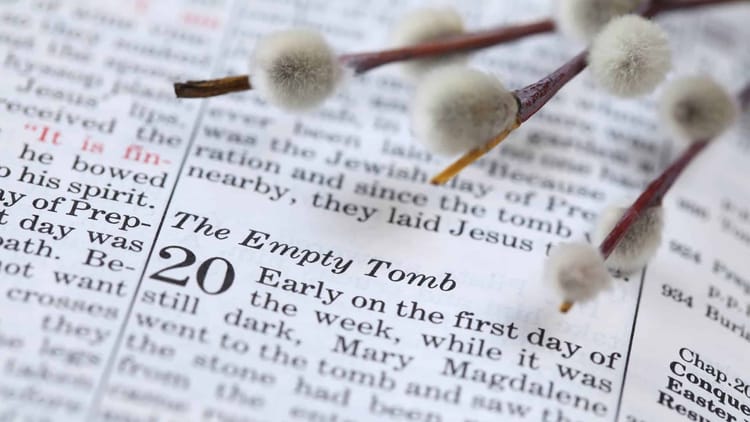A Heart to Sacrifice (John 19:17-42)

Big Idea: Jesus is the King who serves and completes his work so there’s nothing more to do.
Crucifixion was a form of torture and execution in the ancient world that involved fixing a person to a wooden post or tree using ropes or nails. The ancient Persians invented it, but other cultures and peoples adopted it. And the Romans perfected it for 500 years. They used it on slaves, disgraced soldiers, foreigners, and, in particular, political activists. Death took anywhere from 6 hours to 4 days. They killed thousands of people that way.
But one crucifixion became the defining crucifixion of all time. In the passage we just read, Jesus, the Son of God, was crucified. What sets this crucifixion apart is not the brutality of it. That was common. What sets apart this crucifixion is what it reveals about Jesus. In fact, the whole story of the Bible is fulfilled in this one single crucifixion.
What makes this death so different? His death reveals three things about Jesus.
It reveals that Jesus is King.
Verses 16 to 20 describe what happened. They took Jesus to Golgotha, outside Jerusalem, and crucified him between two others. The action slows for four verses to focus on a single detail: the inscription that Pilate put on the cross that read, “Jesus of Nazareth, the King of the Jews.” A mini-controversy erupts, because a lot of the people that read it don’t like the message. But Pilate refuses to change it, and the sign stays.
Why focus on this detail? The details are meant to tell us something. Jesus is crucified in the middle, the place of honor. And the inscription matters too.
It was common for the criminal to be forced to carry in his hands or hanging around his neck a plaque … on his way to the place of execution, making public the “charge” … against him. In some cases, however, the criminal had “the notice of the complaint” attached to the top of the cross. (Zondervan Exegetical Commentary)
It was intended to mock the prisoner. In this case, Pilate writes the charge in a language in multiple languages for everyone to see.
Romans would understand the Latin; the Jewish population would read the Aramaic; and Greek was the universal language of the Mediterranean world. Pilate has, in effect, placed on public display an announcement for the world. Jesus’ kingship is now available for the entire world to see. (Gary Burge)
Pilate probably wrote that message to irritate Jesus’ enemies. But what he wrote ended up being right. The man responsible for sentencing Jesus becomes unwittingly becomes a prophet declaring who Jesus is.
The cross is actually the exaltation of the true King of the world. The brutal act that was meant to humiliate is actually the coronation of the King. Jesus earlier said that he would be lifted up, so that whoever believes in him may have eternal life (John 3:14). Lifted up is a double meaning. He was lifted up on the cross; at the same time he was lifted up as King of the world.
In case we miss it the first time, later in this chapter, Jesus is buried like a king (19:39). He’s buried with a ridiculously lavish amount of spices. Some estimate that it would have been worth a hundred year’s worth of wages. Jesus receives a royal burial.
What makes Jesus’ death so different? It’s his coronation. It’s the moment that everyone in their own language gets to see who Jesus really is: that he is the King, come to die for his people.
That’s the first thing that makes Jesus’ death so different. It reveals Jesus as King. Here’s the second.
It reveals Jesus as Servant.
Another detail slows the action in verses 23 to 24. The soldiers take Jesus’ garments and divide them. It’s a surprising detail for the narrator to notice. Why does John focus our attention on this seemingly insignificant detail?
One of the details that this passage mentions is that Jesus wore a seamless tunic or inside shirt: “But the tunic was seamless, woven in one piece from top to bottom” (John 19:23). There’s been a lot of debate about the symbolism of this tunic. We know that it fulfills Scripture, because John says that it does. But what else does it mean?
I’m pretty sure we can say, at the very least, that John is tying this moment back to John 13:
Jesus, knowing that the Father had given all things into his hands, and that he had come from God and was going back to God, rose from supper. He laid aside his outer garments, and taking a towel, tied it around his waist. Then he poured water into a basin and began to wash the disciples’ feet… (John 13:3-5)
Jesus lay aside his outer garments then. And now he loses his clothes, all of his clothes. “The same self-humbling operates, but here to the last degree, as he lays aside his glory, and by this act, in the divine paradox, is glorified” (D.A. Carson).
You get a window into Jesus’ heart of service in the way that he entrusts his mother, Mary, to John. Even while dying, Jesus is focused not on himself but others.
What makes the death of Jesus so different? It reveals him as a King, but as a King who came to serve. He’s a King who humbles himself to serve people like you and me.
There’s one more detail that points to why the death of Jesus was so different. Jesus’ death shows that he’s King and a Servant. But there’s one more thing it reveals.
It reveals that our Servant-King completed the work God sent him to do.
Verse 28 says that Jesus knew that all was finished to accomplish Scripture. He is very much in control here. It brings to mind what he said earlier: “No one takes it from me, but I lay it down of my own accord. I have authority to lay it down, and I have authority to take it up again” (John 10:18). He is fully in control.
But then we read in verse 30: “When Jesus had received the sour wine, he said, ‘It is finished,’ and he bowed his head and gave up his spirit.” What does this mean?
It means that Jesus completed the work that was assigned to him by the Father. The cross completes everything that the Father gave him to do, right down to the tiniest detail. “His shout of accomplishment was the cry for which creation had been waiting since the fall of Adam” (Mark Johnston).
Resting in what Jesus has done, we need never fear the punishment of our sins, nor worry that God’s law will condemn us in the end. We may rest on what he has completed, knowing that all that needed to be done for us to be saved has been done, finished on the cross. … Looking at our own works, we see everything not only as unfinished and imperfect, but as positively damning. But looking at Jesus’ dying work on the cross, we know that our salvation is finished by a perfect offering of the once-for-all Sacrifice that truly frees us from our sin. (Richard D. Phillips)
The Romans killed tens of thousands of people by crucifixion. But only one was a King who reigned from the cross, serving us, and completing the work of salvation that God sent him to do. Jesus is the King who serves and completes his work so there’s nothing more to do.
What a King. What a servant. What a Savior. Worship him. Receive him. Trust him.
Help us to survey the wondrous cross, Father. And help us to trust and worship the servant King who did everything necessary to save us. We worship him. Amen.





